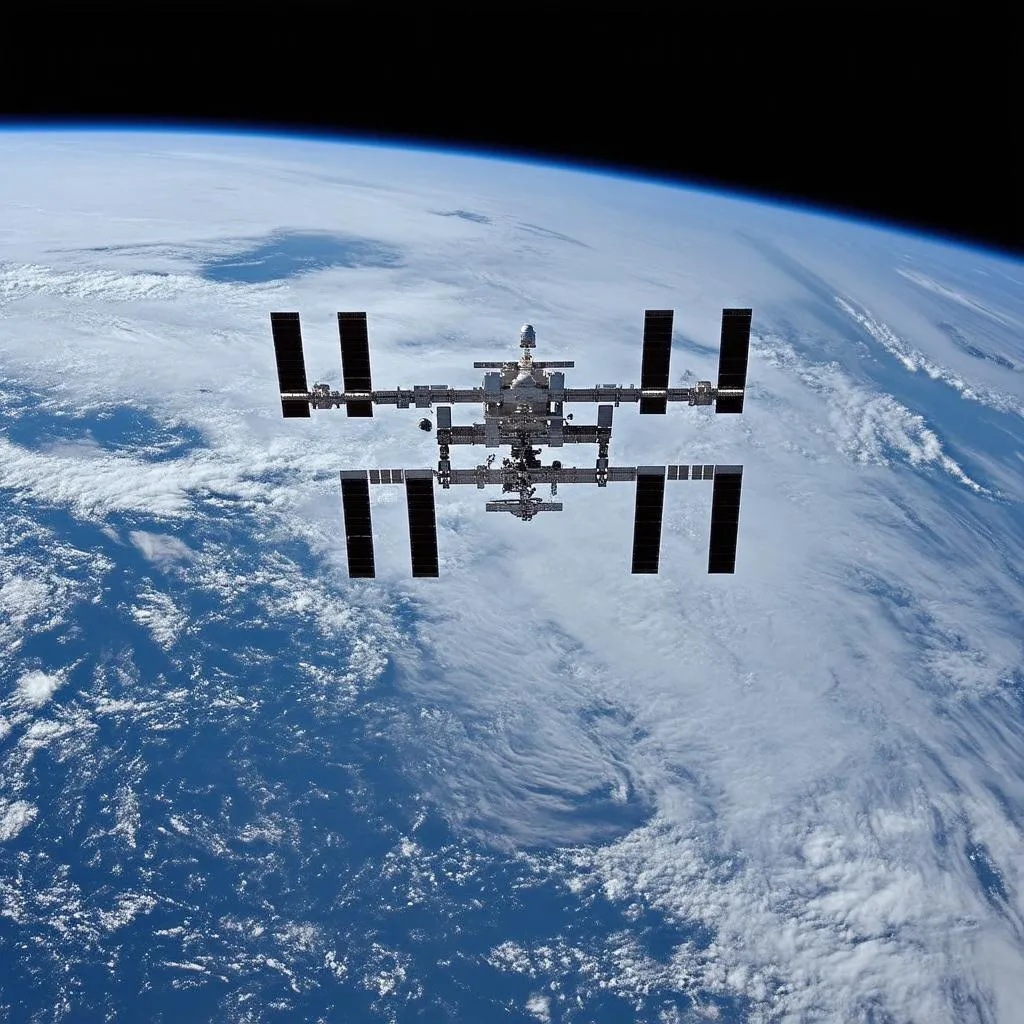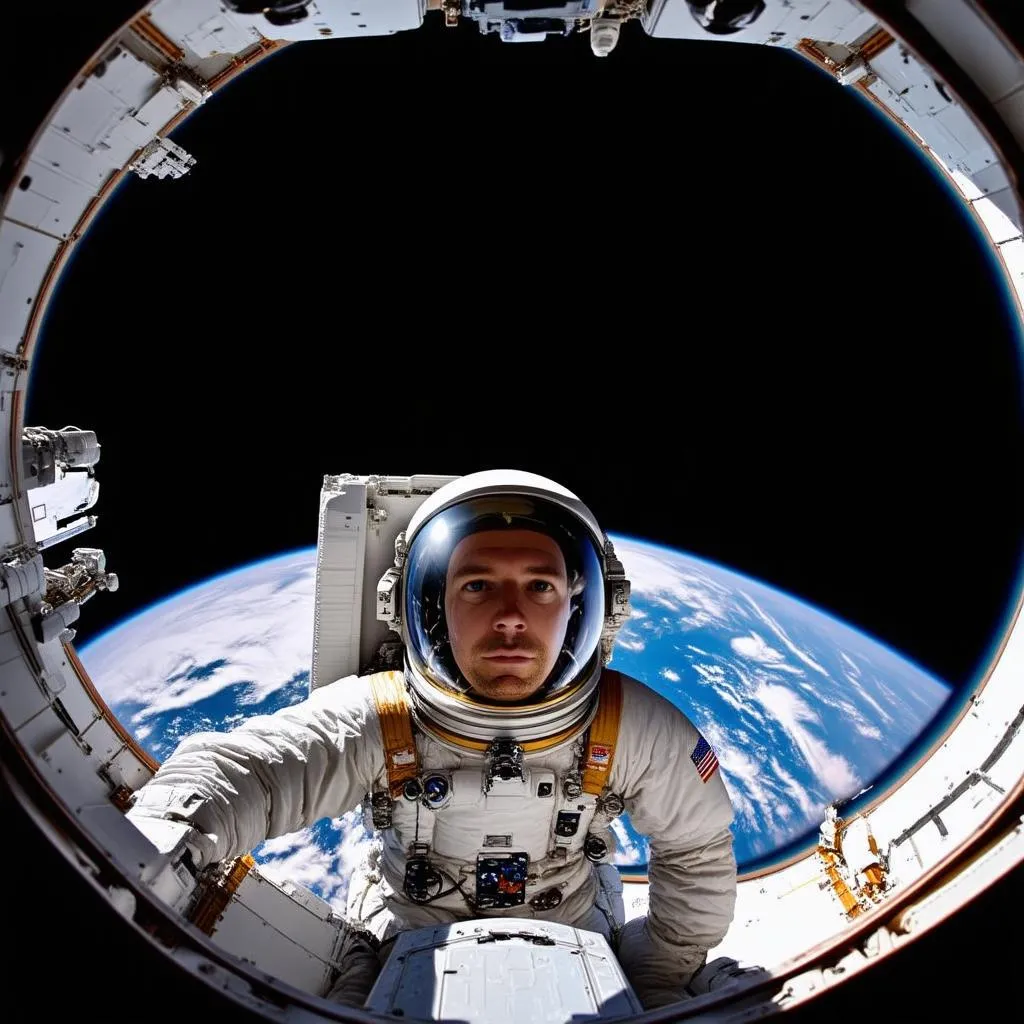Have you ever gazed up at the night sky and wondered about that bright, moving point of light? That, my friends, could be the International Space Station (ISS), a marvel of engineering and a symbol of global collaboration. But just how fast is this space-faring laboratory whizzing around our planet? Buckle up, because we’re about to embark on a journey at breathtaking speed.
The ISS: A Speed Demon in Orbit
The ISS orbits Earth at an astonishing speed of approximately 17,500 miles per hour (28,000 kilometers per hour). That’s about 5 miles per second! To put this into perspective, that’s roughly ten times faster than a bullet fired from a rifle. At this speed, the ISS completes an orbit around Earth roughly every 90 minutes, treating its inhabitants to 16 sunrises and sunsets every single day.
What Keeps the ISS in Orbit?
You might be wondering how the ISS manages to maintain such incredible speeds without shooting off into the vastness of space. The answer lies in a delicate balance between two fundamental forces: gravity and inertia.
- Gravity: Earth’s gravitational pull acts like an invisible tether, constantly trying to pull the ISS towards the planet.
- Inertia: The ISS, however, wants to continue moving in a straight line at a constant speed. This is inertia, the same force that makes you lean to the side when a car makes a sharp turn.
The ISS’s high speed creates enough inertia to counteract Earth’s gravity. Imagine swinging a ball on a string. Gravity wants to pull the ball down, but the string and the ball’s momentum keep it moving in a circle. Similarly, the ISS’s speed and Earth’s gravity work together to keep it in a stable orbit.
Why the Need for Speed?
The ISS’s impressive speed is not just about breaking records. It’s a vital aspect of its functionality and its very survival. Here’s why:
- Maintaining Orbit: As explained earlier, the high speed is crucial for counteracting Earth’s gravitational pull and maintaining a stable orbit.
- Scientific Research: The unique microgravity environment aboard the ISS allows scientists to conduct experiments that are impossible on Earth. This speed is crucial for maintaining that microgravity environment.
Witnessing the ISS from Earth
Believe it or not, you can actually spot the ISS with your naked eye! Websites and apps like NASA’s “Spot the Station” provide tracking information, allowing you to know exactly when and where to look for this celestial traveler. Seeing the ISS streak across the sky is a humbling reminder of humanity’s achievements in space exploration.
FAQs: Your Burning Questions Answered
How big is the International Space Station?
The ISS is about the size of a football field, measuring 357 feet (109 meters) in length. It’s so large that it could be seen from Earth during the construction phase!
Who built the ISS?
The ISS is a testament to international collaboration, built and operated by five space agencies representing 15 countries: NASA (United States), Roscosmos (Russia), JAXA (Japan), ESA (Europe), and CSA (Canada).
How long has the ISS been in space?
The first module of the ISS was launched in 1998. It has been continuously inhabited since November 2000, making it the longest-duration human presence in low Earth orbit.
Travelcar.edu.vn: Your Gateway to Knowledge
For more fascinating insights into the wonders of space and travel, be sure to explore the treasure trove of articles on TRAVELCAR.edu.vn. Discover the science behind sound travel underwater, the incredible journey of Voyager 2, or the sheer power of tsunami waves. The universe of knowledge awaits!
 ISS Orbiting Earth
ISS Orbiting Earth
 Astronaut's View from ISS
Astronaut's View from ISS

